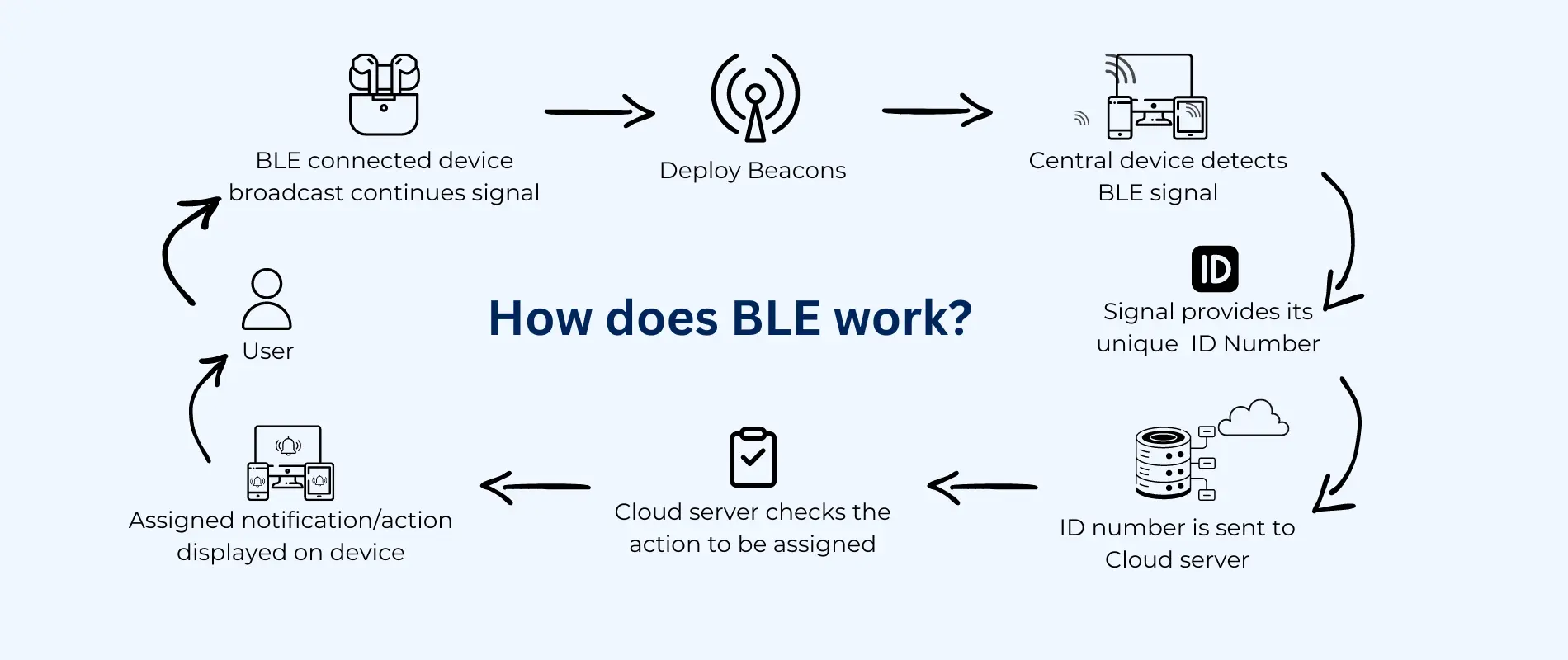Exploring the Potential of WebBLE: Applications and Innovations


What does BLE stand for? – Bluetooth low-energy technology. The potential of the technology exceeds the casual and widespread use cases, like smart bands and smartwatches. Numerous applications, both commercial and corporate, take full advantage of the BLE protocol. What are the primary areas for implementing BLE across various contemporary industries? This post will discuss the question, helping you unleash the full potential of the technology. But prior, let us start with the general background of the BLE.
Bluetooth low Energy (BLE) technology operates in the 2.4. GHz ISM band. BLE is a low-power and wireless network that aims to pair devices over a short range. BLE was developed with the Internet of Things apps in mind: low-energy consumption was prioritised. If the device is not in use, it conserves energy by going into sleep mode. Thus, the opposition between Bluetooth and BLE is grounded primarily on low vs high-energy consumption. Another benefit of BLE is related to security: the technology possesses more robust encryption layers for data protection. Thus, Bluetooth Low Energy can be applied to make money transfers online and process sensitive medical data. With the help of BLE, multiple applications can bridge your smartphone with peripheral devices. E.g., smartwatches, proximity sensors or navigation devices.

BLE is also distinctive by its asymmetry, which means that devices can take central or peripheral roles. For instance, when a smartphone and smart band are paired with each other, the former device – possessing more functionality – will be central, and the latter – having more limited features – will be peripheral. Two peripheral or two central devices cannot communicate with each other.
BLE consumes 0.01–0.50 W of power, depending on the particular use case. How much power does Bluetooth use? Bluetooth uses 1W as the reference.
BLE devices are expected to interact more closely with 5G. As a result, higher connectivity speeds and low latency will be achieved.
Asset tracking, proximity marketing, and indoor navigation, as mentioned before, will be spread more widely across diverse industries.
BLE devices examples – smart sensors, locks, smartwatches and other gadgets – will benefit from the ultra-low-power design, as they will operate for a longer time. Bluetooth beacons will be enhanced by cutting-edge materials and more advanced Bluetooth protocols.
Bluetooth low-energy has been evolving to deliver more secure features. In 2024, the emphasis in this regard is put on enhancing encryption approaches for BLE.
Bluetooth mesh networking is applied to manage huge networks of networked devices. Even more complex Internet of Things implementations are ahead of us in 2024.
PV are special beacons that are embedded with artificial light; they provide facilities (like retail stores or airports) with consistent illumination. The batteries for these devices don’t need to be replaced, so only minimal maintenance is required.
The question “What is BLE?” will soon be replaced with a more relevant question, “What is V-BLE?”. The latter technology can easily imitate the behaviour of various Bluetooth LE beacons. The aim of the technology is to imitate the signals of the physical beacons by a virtual representation so the signals can be interpreted by the system as if those from the physical beacons.
PNN Soft has a dedicated team of developers who constantly hone their skills and trace current trends of BLE technology to deliver the most efficient solutions.
One of the examples of our solutions is based on the BLE – Bluefy Web browser. The zest of this application lies in the possibility of connecting several peripheral devices simultaneously. The app has a robust level of security thanks to double encryption. Bluefy is available for all iOS users.
If you plan to develop the system with BLE at its core, don’t hesitate to reach out to the PNN Soft team. Our extensive experience in the field and high qualifications will help you reach the strategic goal of your business through digital transformation. If you are not sure if Bluetooth classic vs BLE will be more suitable for your project, you can discuss the project goals with our specialists, and they will help you select the most versatile and efficient technological stack.